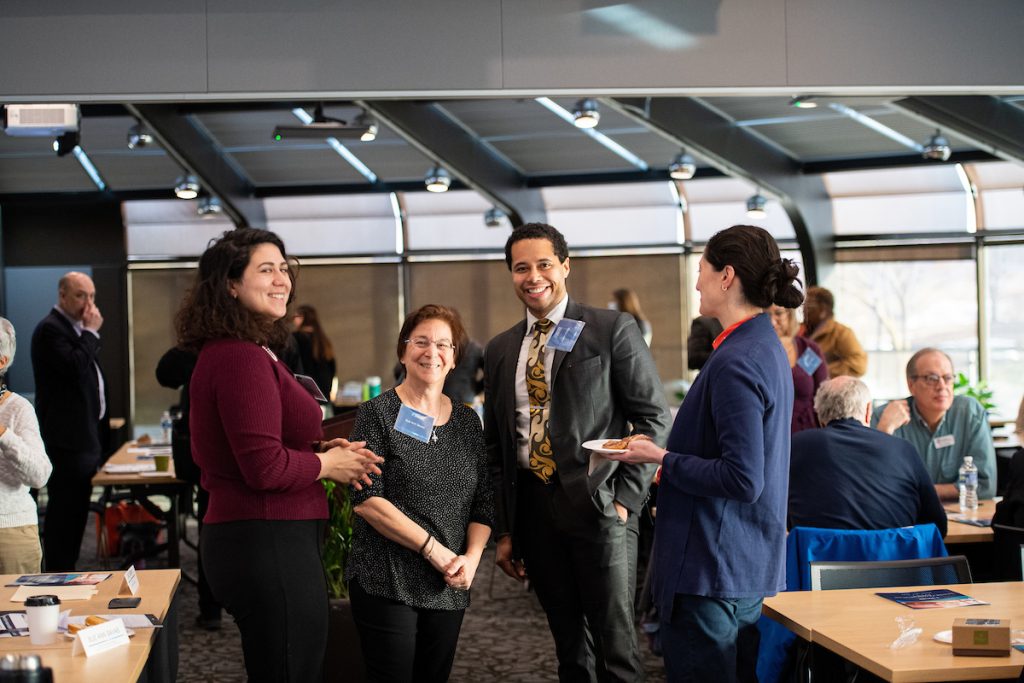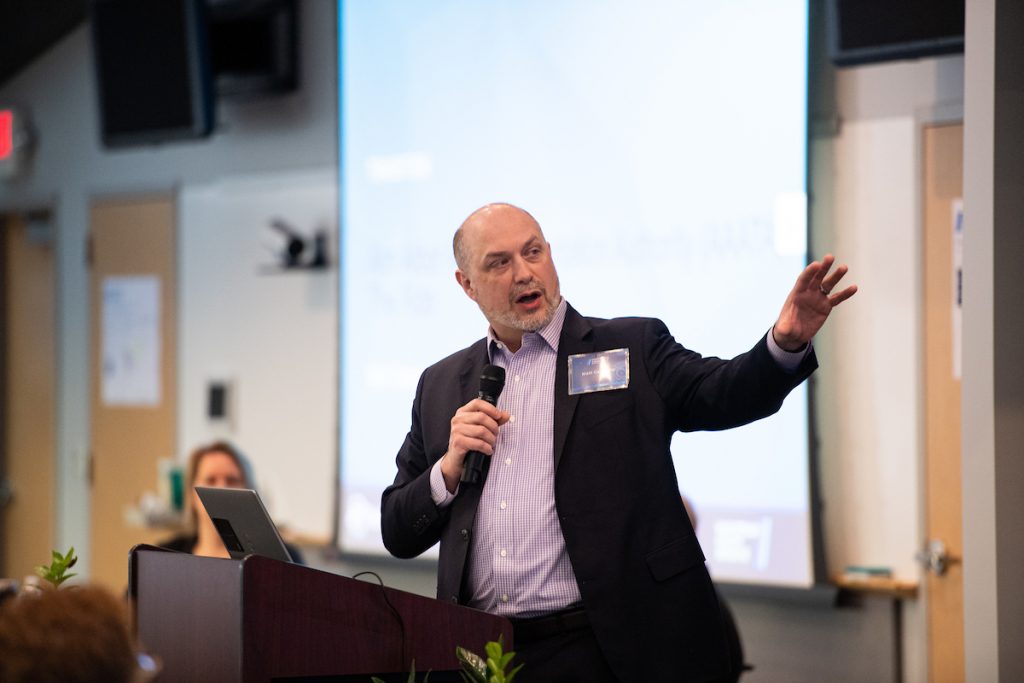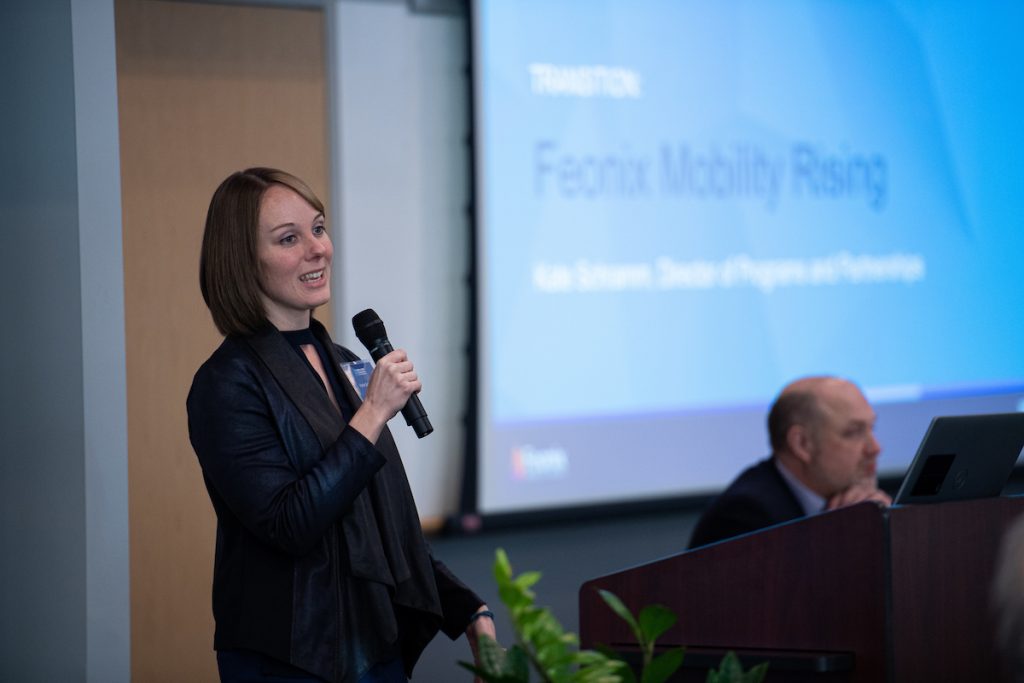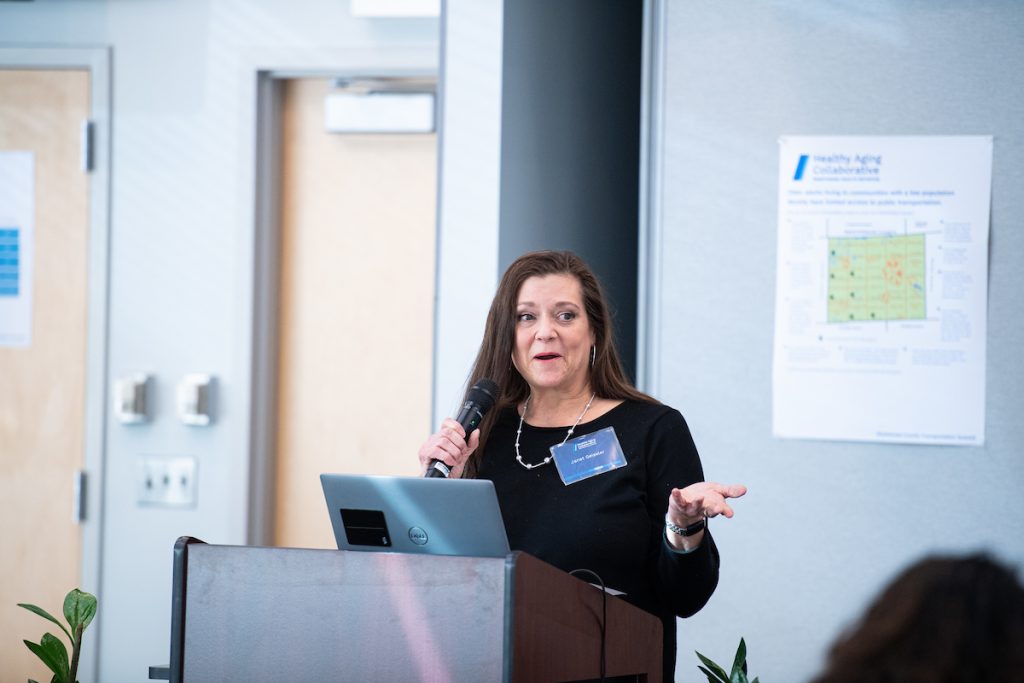On a Thursday morning in early March, dozens of local stakeholders funneled into a conference room on the east side of Washtenaw County. What were they doing there? They’d come to discuss transportation challenges for the county’s aging population—and ways to address those challenges.
Transportation plays a vital role in the lives of Washtenaw’s senior citizens, enabling them to:
- maintain their independence,
- engage in social activities,
- access health care services, and
- meet their daily needs.
However, seniors often face unique challenges when it comes to transportation.
Access to equitable transit is a social determinant of health.
5.8 million Americans miss medical appointments due to lack of transportation each year. Many who miss preventive appointments end up in the emergency rooms, where care is costly.
Equitable transportation also plays a pivotal role in mental health and wellbeing. Isolation and loneliness are significant concerns for many older adults, leading to adverse health effects.
The health risks associated with social isolation and loneliness are troubling and include higher mortality rates, increased blood pressure, progression of Alzheimer’s Disease, depression, pain, fatigue, failing immune systems, and decreased restorative sleep.
In fact, one analysis suggests that the health risks of social isolation are equivalent to smoking 15 cigarettes a day. Seniors who report feeling lonely or socially isolated have a 45 percent greater mortality risk.
Reducing social isolation and promoting community connectedness is a dire need in Washtenaw—a need that has emerged multiple times in the county’s Community Health Needs Assessments.
The summit, hosted by the Washtenaw Health Initiative Healthy Aging Collaborative, welcomed speakers from the Michigan Department of Transportation (MDOT), the Ann Arbor Area Transportation Authority (The Ride), and Feonix – Mobility Rising, a national nonprofit that aims to reduce transportation barriers.
Between each speaker, attendees discussed equitable transportation solutions.
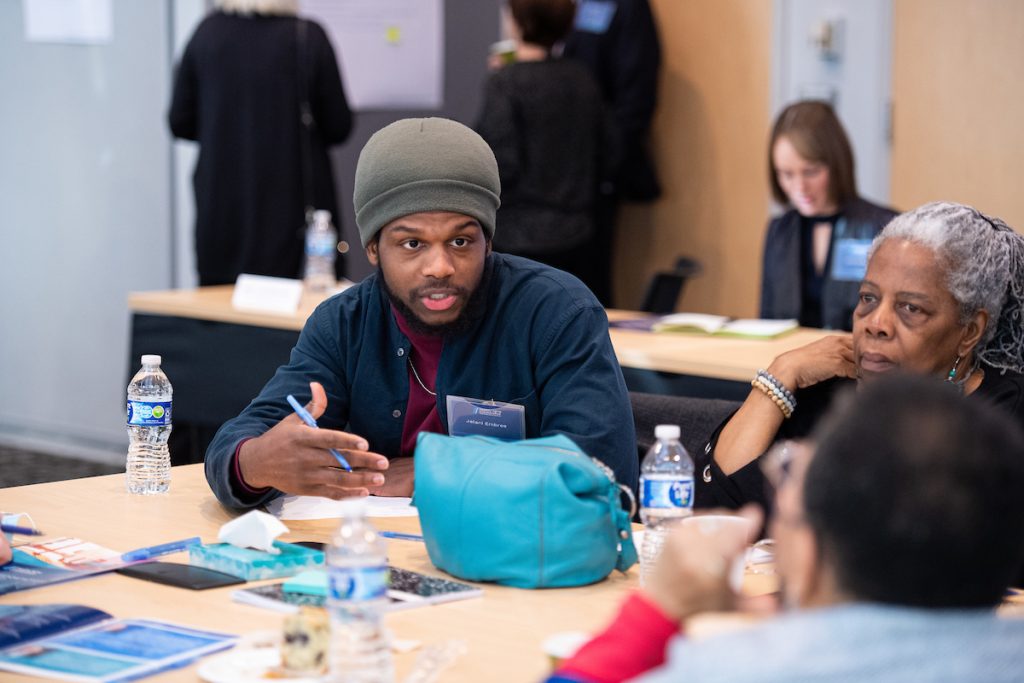
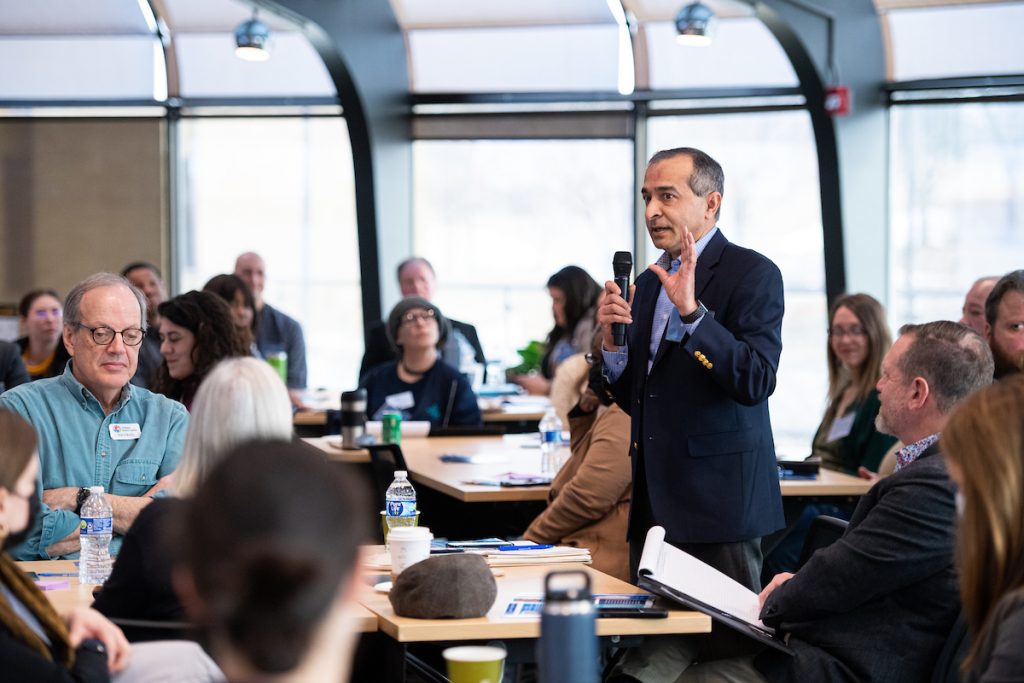
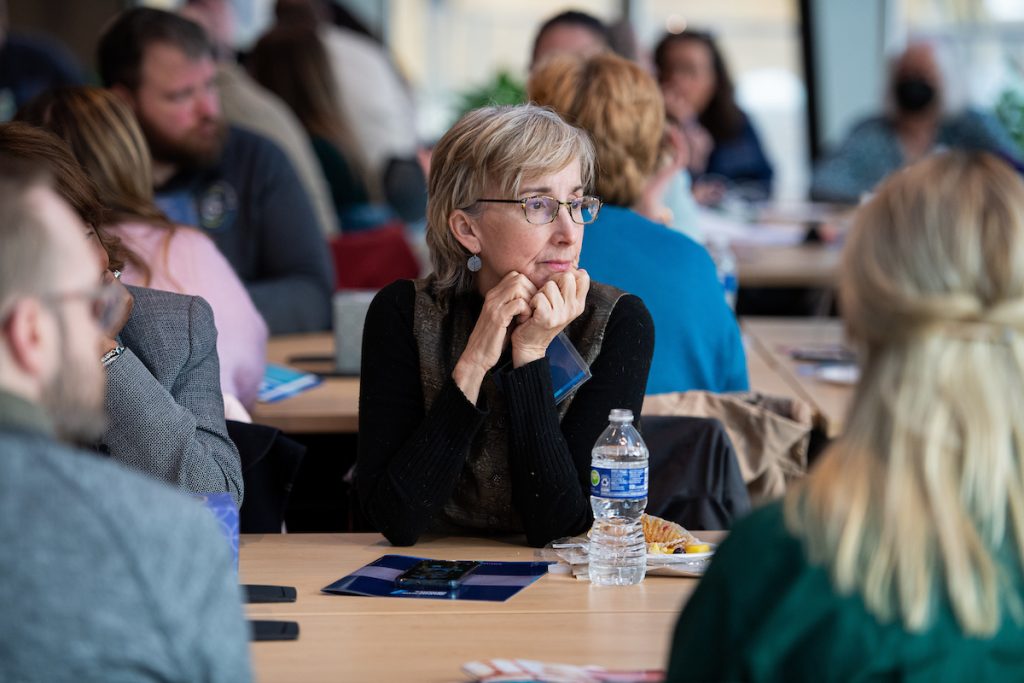
The Impetus for the summit.
Sue Ann Savas, a clinical associate professor at the University of Michigan School of Social Work, kicked the summit off by describing the Healthy Aging Collaborative’s research on the ways in which transportation, or lack thereof, can influence health.
“We have really good data on fruit and veggie intake,” says Sue Ann Savas. “But we don’t have data on transportation. We don’t have good data on routes or on what’s working and not working.”
In efforts to change that, the group:
- interviewed 16 key stakeholders,
- inventoried local public transportation providers,
- examined publicly available transportation reports, and
- Conducted a secret shopper study, where they called local transportation providers to identify a transportation route for a doctor’s appointment.
Through the experiment, the collaborative found that local public and non-profit providers allowed for wheelchairs and walkers, while most of the commercial providers did not. While 70 percent of the county’s transportation providers offered door-to-door services, only 30% offered door-through-door services—a crucial service that helps mobily-impaired people get from their house to the vehicle and from the vehicle back to their home.
Savas notes that the flow of the county’s transportation funding was difficult to pinpoint, which can cause challenges when advocates try to identify equitable solutions.
With all this in mind, the collaborative decided to host a summit to convene local leaders and discuss solutions.
Local transportation options.
Next, Matt Carpenter, chief executive officer of the Ann Arbor Area Transportation Authority, outlined the Ride’s services such as:
- fixed route buses that help people get to a job, a medical facility, or a social activity;
- weekly GroceryRide services that take seniors from their homes to Meijer and back; and
- GoldRide, provides free transportation to people ages 65 or older on fixed bus routes.
For more information on The Ride’s services, visit their website
Additionally, Carpenter discussed The Ride’s recent millage. Funds from the $2.38 million millage will be used to develop an express route from downtown Ypsilanti to downtown Ann Arbor, as well longer hours of operation, like more frequent service on the weekends.
But this millage only taxes Ann Arbor, Ypsilanti, and Ypsilanti Township. This means that only residents of those areas will reap the benefits.
“Without a county-wide tax base, you are going to be left with a patchwork of funding which isn’t great for creating a viable network,” said Carpenter. Therefore, seniors who live on the west side of Washtenaw County–where transportation options are limited–won’t benefit from the millage but would benefit from county-wide transportation funding.
During the Healthy Aging Collaborative stakeholder interviews, one senior in Sylvan Township needed door-through-door service “someone to come into my house and help me into the van.” The service was hard to find, and expensive when it was available. Another interviewee in Bridgewater Township said simply, “Public transportation is not an option for me.”
In 2016, an effort to create regionwide transportation tax through the Southeast Regional Transit Authority was rejected. But Carpenter believes there is potential for counties—like Washtenaw—to approve a county-wide transportation tax.
Mobility as a Service.
Kate Schramm (Director of Programs and Partnerships, Feonix – Mobility Rising) was invited to share innovations from her organization’s work across the country. She introduced participants to the Transportation Assistant Hub model, which maximizes some key components to achieve transportation equity.
Schramm said, achieving transportation equity involves taking a look at:
- Staffing
- Technology
- Community Outreach
- Capacity
Regarding technology, Schramm discussed Mobility as a Service (MaaS) and the importance of a central access system.
“The fragmented labyrinth of resources, policies, and programs for transportation is not working for those who rely on it the most,” said Kate Schramm.
The MaaS concept is that riders need a one-stop shop to access transportation. Through technology, regions are hoping to make it possible for residents to see, book, and pay for their transportation options in one app or website. The Feonix model also involves call center support for those without access to smarphone or Internet.
Mobility Navigators can be a powerful tool to help seniors navigate the transportation system, says Schramm—whether it is a MaaS system or a fragmented one.
But all of this requires funding and buy-in from leaders.
.
Innovations at the state level.
Lastly, Janet Geissler, a mobility innovations specialist at the Michigan Department of Transportation, also shared the urgency for a statewide MaaS platform. Geissler said this is necessary not just for local public transit but also for commercial vendors like Uber and Amtrak.
Geissler believes that governments, transportation agencies, community organizations, and private entities should work together to develop comprehensive transportation networks that address the specific needs of seniors.
Enhancements made for seniors and persons with disabilities will benefit all users, Geissler shared.
Looking ahead: next steps for local solutions.
For Washtenaw County, it will be crucial to address these challenges and develop comprehensive transportation services tailored to the needs of senior citizens if we hope to preserve the health of our seniors–regardless of their financial means or location.
To get involved with the Healthy Aging Collaborative’s goals to improve equitable transportation in Washtenaw County for seniors, fill out the form below.
Get involved Read our report
